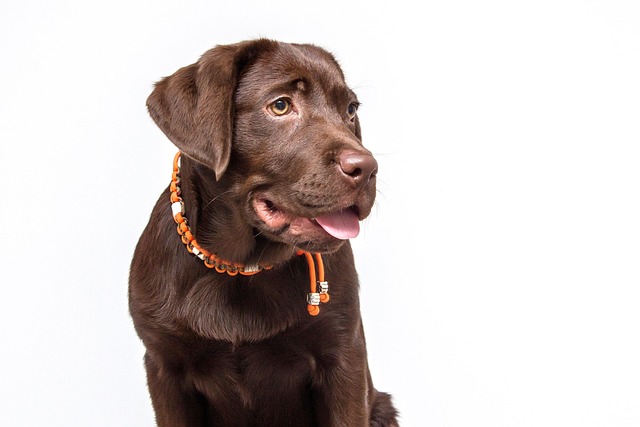
How do i train my dog to be obedient?
Watching your dog dart across the park ignoring your calls isn’t just frustrating—it can put them at risk near busy streets or public spaces.
The timeline for training a guide dog varies more than most people expect—there’s no magic number, but most programs land between 18 to 24 months. It’s not a one-size-fits-all process; think of it like raising a kid—every puppy learns at their own pace, and factors like temperament, health, and even the specific needs of their future handler play a big role. Some might wrap up a bit faster, others take a few extra months, especially if a pup needs more time to master tricky skills like navigating crowded intersections or staying calm in noisy environments.
Most programs start with puppies as young as 8 weeks old, placed in foster homes where they learn basic manners and socialization. These early months are all about getting comfortable in the world—meeting different people, hearing loud noises, riding in cars. It’s surprising how much of guide dog training happens here; a puppy that’s skittish around strangers or scared of elevators will struggle later. Foster families follow guidelines from training organizations, making sure the pup gets used to the routines that’ll matter most for their future work. By the time they’re 12 to 14 months old, they’re ready to move to the next phase.
That’s when the professional guide dog training kicks in. Trainers focus on core skills: navigating obstacles, stopping at curbs, responding to directional commands, and even knowing when to ignore distractions (like a squirrel darting across the sidewalk). This phase is intense, often 6 to 8 months of daily sessions. What people don’t always realize is how much teamwork goes into it—trainers work closely with vets to monitor health, and sometimes bring in handlers-to-be for early introductions. It’s not just about the dog learning; the handler needs to build trust too, which starts long before the final handoff.
 Around 18 months, the real test begins: Can this dog stay focused in a busy grocery store? Will they alert their handler to low-hanging branches on a trail? Not every pup makes the cut—maybe they’re too easily distracted, or struggle with specific commands. Those that do move on to final certification, which in many places ties into local laws. In the U.S., for example, the ADA (Americans with Disabilities Act) sets standards for what a guide dog must do to qualify as a service animal. In Europe, similar regulations ensure consistency across borders, so a trained guide dog in France can work just as effectively in Germany.
Around 18 months, the real test begins: Can this dog stay focused in a busy grocery store? Will they alert their handler to low-hanging branches on a trail? Not every pup makes the cut—maybe they’re too easily distracted, or struggle with specific commands. Those that do move on to final certification, which in many places ties into local laws. In the U.S., for example, the ADA (Americans with Disabilities Act) sets standards for what a guide dog must do to qualify as a service animal. In Europe, similar regulations ensure consistency across borders, so a trained guide dog in France can work just as effectively in Germany.
Even after certification, the learning continues. The handler and dog spend weeks adjusting to each other’s rhythms—how the handler moves, the subtle cues the dog picks up on. It’s a partnership that grows over time, not something that ends the day they go home together. Trainers often check in for months afterward, offering tips if new challenges pop up, like navigating a busy airport for the first time.
Of course, none of this happens in a vacuum. Following local laws is key—from ensuring the training program is accredited to understanding where guide dogs are legally allowed (which, in most places, includes restaurants, stores, and public transit). Skipping these steps can lead to headaches down the line, not just for the handler but for the dog too. It’s why reputable programs spend as much time teaching legal basics as they do teaching the dogs to fetch a dropped keys.
So, how long does it take? On average, 18 to 24 months—but what matters more than the timeline is the care that goes into each step. From the foster family’s patience to the trainer’s expertise, every part of the process shapes a dog that doesn’t just follow commands, but becomes a trusted partner. That’s the real goal—no matter how long it takes.

Watching your dog dart across the park ignoring your calls isn’t just frustrating—it can put them at risk near busy streets or public spaces.

New puppy owners often find themselves rushing to clean up accidents before they set in, and that’s where puppy pad training becomes a game-changer.

If you've noticed your dog's waistline disappearing and your veterinarian has mentioned those few extra pounds, your first instinct might be to simply reduce the amount of food in their bowl.

Training a dog to use a designated spot indoors isn’t as daunting as many new owners fear, but it does take consistency and an understanding of your pet’s needs.

That moment of dread on a walk is all too familiar for many new dog owners. You see another dog approaching down the sidewalk of your neighborhood

If the sight of another dog on your neighborhood walk makes your heart sink as your own dog erupts into a frenzy of barking and lunging, you're not alone.